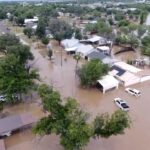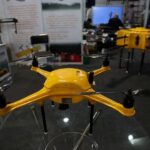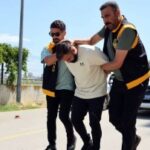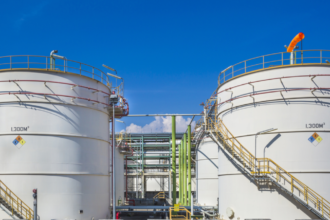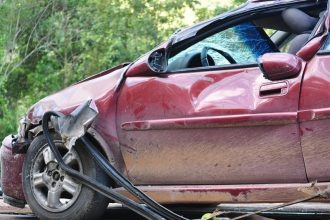Body armor comes in various levels, each offering different degrees of protection. Here’s a quick guide:
- Level IIA: Lightweight and comfortable, ideal for concealed protection against standard handgun threats.
- Level II: Offers more protection than IIA, stopping higher velocity handgun rounds.
- Level IIIA: The strongest soft armor, effective against most handgun rounds and some shotgun threats.
- Level III: Introduces hard plates for rifle protection, ideal for high-risk situations.
- Level IV: The heaviest and most protective, designed to stop armor-piercing rounds.

Have you ever wondered what keeps the heroes on the streets and in harm’s way safe? Whether it’s a police officer facing a dangerous situation or a security guard protecting valuables, body armor plays a crucial role. Now, with more deaths occurring due to firearms, body armor is becoming essential. In 2019 alone, there were more than 250,000 firearm fatalities – an alarming number for everyone. (1)
But with all the different levels and technical terms, choosing the right vest can feel overwhelming. Also, given that the body armor market is a growing industry – a USD$ 2.3 billion market, to be exact – you might feel overwhelmed with all the options you have. This guide will break down the five main levels of body armor protection so you can understand what each one offers. (2)
Level IIA
Think of the Level IIA armor as the entry-level option in the world of protective gear. It’s for those who want some peace of mind without feeling like they’re lugging around a shield all day.
Level IIA strikes a nice balance – it’ll stop some serious threats, but it won’t weigh you down or make you feel like you’re wrapped in a mattress. It’s perfect for those who need protection but also need to move around easily and stay comfortable throughout their day.
Construction and design
So, what’s Level IIA armor actually made of? It has layers of super-tough, lightweight fibers woven together. These layers work as a team to catch bullets and spread out their energy.
It’s soft and flexible – not like those rigid plates. That’s why it’s a go-to choice for people who need protection in their daily routine but aren’t expecting to walk into a war zone. But, if you’re walking into a more high-risk environment, you may need higher protection from Level 4 plates that are made up of more rigid materials.
Now, the Level IIA armor can stop the most standard velocity 9mm and .40 S&W ammunition. These are common handgun rounds often encountered in civilian and law enforcement scenarios.
Specifically, Level IIA armor can protect against:
-
- 9mm Full Metal Jacket Round Nose (FMJ RN) bullets with a nominal mass of 8.0 grams (124 grains) at a velocity of 332 meters per second (1090 feet per second)
-
- .40 S&W Full Metal Jacket (FMJ) bullets with a nominal mass of 11.7 grams (180 grains) at a velocity of 352 meters per second (1155 feet per second) (3)
It’s important to note that while Level IIA offers protection against these specific threats, it may not be effective against higher velocity rounds or those with greater penetrating power.
Level II
Now, it’s time to talk about Level IIA armor’s slightly burlier cousin. It’s for those who want a bit more oomph in their protection but aren’t ready to lug around heavy-duty plates.
Construction and Design
It’s built pretty similar to Level IIA, which also uses high-tech fibers. But here’s the kicker: Level II armor packs in more layers or uses tighter weaves. It’s like upgrading from a light jacket to a thicker coat.
You get more protection, but it’s still soft and flexible. This makes Level II a tad thicker and heavier than Level IIA. But these are only small differences. Most security personnel find the extra safety is worth those few extra ounces. You’ll still be able to move around just fine.
Level II body armor is certified to stop the following types of ammunition:
-
- 9mm Full Metal Jacket Round Nose (FMJ RN) bullets with a nominal mass of 8.0 grams (124 grains) at a velocity of 358 meters per second (1175 feet per second)
-
- .357 Magnum Jacketed Soft Point (JSP) bullets with a nominal mass of 10.2 grams (158 grains) at a velocity of 436 meters per second (1430 feet per second) (3)
Compared to Level IIA, Level II armor can withstand higher-velocity 9mm rounds and adds protection against the powerful .357 Magnum, a cartridge known for its stopping power and popularity among law enforcement and civilian users.

Level IIIA
Level IIIA body armor is the heavyweight champ of soft body armor. This is as good as it gets before talking about rigid plates. If you want protection against the meanest handguns out there, maybe even some shotgun action, but you’re not ready to strap on armor plates, then this armor level is for you.
Construction and design
Level IIIA armor utilizes advanced materials and construction techniques. Manufacturers take those utterly strong fibers mentioned earlier and then layer them up. They weave these fibers in special patterns, maybe even laminate them, squeezing every ounce of protection out of these materials.
What’s the catch? Level IIIA is noticeably thicker and heavier than Level II. You’ll feel the difference. But here’s the thing: it’s still flexible. You’re not wearing a turtle shell. Some of the fancy versions even come with built-in cooling systems.
Now, Level IIIA body armor is certified to stop the following types of ammunition:
-
- .357 SIG Full Metal Jacket Flat Nose (FMJ FN) bullets with a nominal mass of 8.1 grams (125 grains) at a velocity of 448 meters per second (1470 feet per second)
-
- .44 Magnum Semi Jacketed Hollow Point (SJHP) bullets with a nominal mass of 15.6 grams (240 grains) at a velocity of 436 meters per second (1430 feet per second) (3)
In addition to these specific threats, Level IIIA armor is generally capable of stopping most handgun rounds, including those that Level II armor may struggle with. It also offers some protection against shotgun threats, though the exact level of protection can vary depending on the specific ammunition and range.
Level III
Level III is where you say goodbye to soft armor and hello to hard plates. It marks a significant leap in protective capabilities, introducing the first level of protection against rifle threats. This level represents the transition from soft body armor to hard armor plates, offering substantially increased protection at the cost of added weight and reduced flexibility.
Construction and design
Forget about those comfy fabric layers. Level III is all about rigid plates – ceramics, high-tech plastics like polyethylene, and sometimes even steel. Manufacturers mix and layer these materials to get the perfect plate for protection and weight.
It also comes in various sizes and shapes to protect vital areas of the torso, including:
-
- Full-size plates for front and back protection
-
- Smaller side plates for lateral protection
-
- ‘Shooter’s cut’ plates that allow for better arm mobility
Given its excellent design, Level III body armor is designed to stop the following type of ammunition:
-
- 7.62mm NATO Full Metal Jacket (FMJ) bullets with a nominal mass of 9.6 grams (148 grains) at a velocity of 847 meters per second (2780 feet per second) (3)
This level of protection is revolutionary, as it’s the first in our progression that can reliably stop high-powered rifle rounds. The 7.62mm NATO round, also known as .308 Winchester in its civilian variant, is a common and powerful cartridge used in many military and hunting rifles.
In addition to this specific threat, Level III armor typically provides protection against:
-
- All handgun threats that lower levels protect
-
- Many intermediate rifle cartridges (like the 5.56mm NATO/.223 Remington)
-
- Some hunting rifle cartridges
It’s important to note that while Level III offers significant rifle protection, it may not stop some of the most high-velocity or armor-piercing rifle rounds.
Level IV
Level IV body armor represents the pinnacle of personal ballistic protection. This is the stuff you wear when you’re expecting the absolute worst. It could be battlefield chaos or those law enforcement situations that make the evening news. The Level IV body armor is designed to stop pretty much anything that comes its way, including armor-piercing rounds that give other armors nightmares.
Construction and design
Level IV armor plates are constructed using advanced materials and complex manufacturing processes to achieve their exceptional level of protection. This type of armor has layers of ceramic composites, a special plastic called ‘Ultra-High-Molecular-Weight Polyethylene,’ and those trusty aramid fibers. Each manufacturer has their secret recipe, but they’re all aiming for the same thing: stop the scariest bullets while trying not to weigh as much as a small car.
Level IV plates are generally thicker and heavier than their Level III counterparts due to the additional materials needed to defeat armor-piercing rounds. They come in various shapes and sizes similar to Level III plates, including:
-
- Full-size front and back plates
-
- Side plates for additional protection
-
- Specially shaped plates to protect other vulnerable areas
Level IV body armor is certified to stop the following type of ammunition:
-
- .30 caliber armor-piercing (AP) bullets with a nominal mass of 10.8 grams (166 grains) at a velocity of 878 meters per second (2880 feet per second) (3)
This specific round is chosen for testing because it represents one of the most challenging threats to defeat. In addition to this armor-piercing round, Level IV armor is generally capable of stopping:
-
- All threats that lower levels protect against (handguns, shotguns, non-AP rifle rounds)
-
- Most other armor-piercing rifle rounds
-
- High-velocity sniper rifle ammunition
Despite being dubbed as the highest level of protection, Level IV armor still has its limitations. Wearing Level IV plates is like strapping a couple of dictionaries to your chest. It’s heavy and thick, which can impact mobility and cause faster fatigue. It would also cost you more. But if you’re facing threats that need Level IV, that’s probably the least of your worries.
In closing
So, there you have it – the full spectrum of body armor, from the lightweight Level IIA to the bulletproof beast that’s Level IV. Each level has its place, depending on whether you’re walking a beat or storming a fortress. But remember, even the toughest armor has its limitations. So, whether you’re in law enforcement, the military, private security, or just a concerned citizen, choosing the right armor is all about balancing the threats you face, the job you need to do, and how much bulk you can handle. Choose smart and stay safe!
References
1. ‘Gun Deaths by Country 2024’, Source: https://worldpopulationreview.com/country-rankings/gun-deaths-by-country
2. ‘Body Armor Market Size, Share & Trends Analysis Report By Protection Level’, Source: https://www.grandviewresearch.com/industry-analysis/body-armor-market
3. List of body armor performance standards’, Source: https://en.wikipedia.org/wiki/List_of_body_armor_performance_standards#





